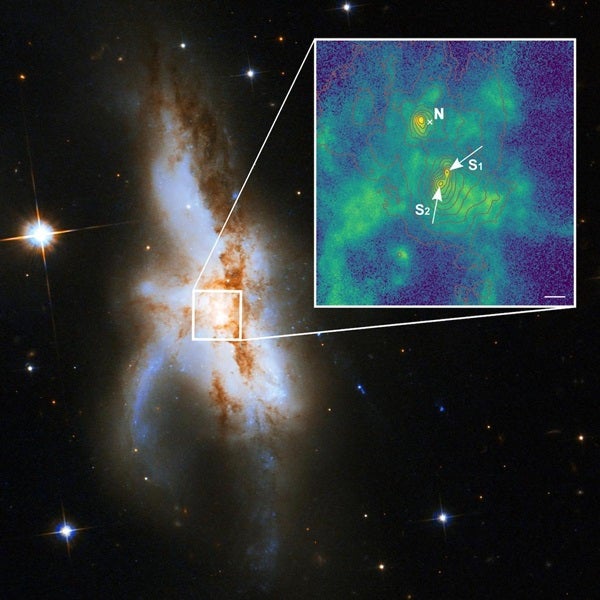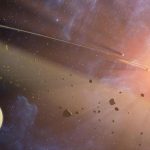Key Takeaways:
- Astronomers found 3 supermassive black holes in a single galaxy, NGC 6240. This is the first time such a concentration has been observed.
- NGC 6240 is a galaxy that appears to be the result of a triple merger. Scientists previously thought it was a double merger.
- The 3 black holes each weigh more than 90 million suns and are located very close together, within a region of 3,000 light-years.
- This discovery suggests that multiple galaxies can merge simultaneously to form larger galaxies, which could explain the existence of very massive galaxies.
- This finding helps astronomers understand how the biggest galaxies and their central black holes formed much faster than expected.
Catching two supermassive black holes sharing close quarters isn’t that unusual. But it’s pretty strange to see three fighting for position. Astronomers actually don’t often see a triplet like that. As per the recently accepted paper for publication in Astronomy & Astrophysics, three supermassive black holes can be found in a single galaxy, NGC 6240.
Three black holes for the price of one

In the study, an international team of astronomers identified three supermassive black holes lurking near the center of galaxy NGC 6240, which has been visibly disturbed by the gravitational effects of a triple merger. Because NGC 6240 is so close—just 300 million light-years away—astronomers had previously assumed that its odd shape was the product of a typical merger between two galaxies. They believed that these two galaxies collided as they increased to hundreds of miles per second, and that they are still combining. Therefore, the researchers expected to find two supermassive black holes hiding near the center of the cosmic collision.
Instead, the team discovered three supermassive black holes, each weighing more than 90 million Suns, when they used 3D mapping techniques to peer into the core of NGC 6240. (To put this into perspective, Sagittarius A*, the supermassive black hole at the center of the Milky Way, is roughly 4 million solar masses in weight.) Furthermore, the three massive black holes of NGC 6240 are confined to an area that is less than 3,000 light-years across, or less than 1% of the galaxy in which they are found.
“Up until now, such a concentration of three supermassive black holes had never been discovered in the universe,” said study co-author Peter Weilbacher of the Leibniz Institute for Astrophysics Potsdam in a press release. This is the first time that scientists have seen a group of supermassive black holes packed into such a small area, despite the fact that they have previously discovered three distinct galaxies and the black holes that are connected to them on a collision course.
The discovery not only demonstrates how multiple galaxies can combine simultaneously to form the largest galaxies in the universe, but it is also a strange, thrilling, and unprecedented discovery. That’s a process that confounds astronomers because, despite the universe being nearly 14 billion years old, they observe galaxies that are too massive to have been assembled by slower, two-galaxy mergers.
Weilbacher stated that the largest galaxies with their central supermassive black holes were able to evolve much faster if multiple galaxies underwent simultaneous merging processes. “This scenario is first indicated by our observations.”


